In 1939 Winston Churchill said “Russia is a riddle, wrapped in a mystery, inside an enigma” and coincidently a short time before we entered the country there was a magazine title story that was called something like, “Russia — Understanding the Enigma” sitting in the window of a German book store. More than 65 years later Churchill’s description is still applicable.
Most of us have some sort of preconceived notions about Russia, and we must admit that we had ours. Our stay in Saint Petersburg was really only enough to add to those a priori assumptions, and as with most countries (and most things in general), we left feeling like we had learned just enough to realize that we haven’t a clue about the country, let alone the city that we called home for eight days.
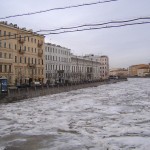
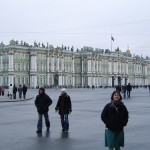
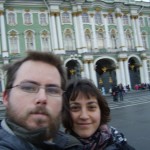
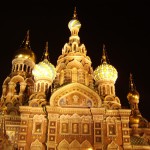
Photos from right to left: Frozen crust on the River Moyka, The Hermitage, The first tourist pose in a long time, The “Church on Spilled Blood” used as a root cellar but the Soviets.
Our interest in visiting Russia was inspired by the renowned Vavilov Institute (VIR), which is known for housing one of the world’s largest and oldest gene banks. In planning our trip to Europe, the VIR was at the top of the list of places we wanted to go, and after more than a little effort, Nick was able to secure an invitation for us.
We had the unique circumstance of arranging a visit to Russia that bridged the first two weeks of the New Year, with an arrival of January 4 and a departure of January 12. In arranging our trip, Sergey Alexanian, a Vice Director and the Foreign Relations specialist at the Vavilov Institute, had mentioned “the holidays,” but I assumed he was referring only to the couple of days on either side of the weekend of January 6-7, the Eastern Orthodox Christmas. Like with many assumptions, I was very wrong.
It turns out that since 2005 most of the country closes down for the almost two week period beginning the weekend before New Year’s (so this year December 29), until Monday, Tuesday, or Wednesday of the second week of the new year. Of course many people celebrate the December 25 Christmas as well, and also the “second new year,” on January 14. According to an article in the Saint Petersburg Times, the twice-weekly free English language rag, sociologists have already begun to study the effects of such a long, large scale holiday, and it turns out that fires, crimes, and alcohol poisoning skyrocket during this time.
And so, our visit to the Vavilov was slightly hampered by the lack of availability of much of the staff. Also, in addition to the week and a half of the official holiday, the Director of the Institute had told his staff that they could have the remainder of that week off, which constituted the entirety of our time there. Luckily for us, there were some people that still decided to work, showing that the current staff carry on with a similar level of dedication that the Vavilov Institute is known for.
This dedication is exemplified in the story of the winter of 1940. This was an extremely cold winter, and to make matters worse St. Petersburg was under siege, so supplies for the residents were cut off. Conditions at this time were horrible and many people in the city died of starvation and from the cold (not to mention war). The scientists at the Vavilov Institute barricaded themselves inside to prevent people from stealing their stores, and eventually martyred themselves for the sake of their seeds — many of them died of starvation at their desks, surrounded by accessions of grains and potatoes that they had committed themselves to stewarding. Nicolay Ivanovich Vavilov, agronomist and botanist extraordinaire for which the Institute is named, met a similar fate a few years later. He was arrested in 1940 by the Stalinist regime and sent to a prison, where he died of starvation in early 1943. In more recent times, staff have continued their work without pay for months a a time, when the Institute’s chronic lack of funding was at its most severe.
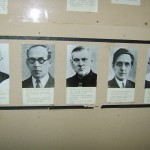

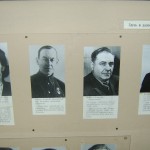
The VIR scientists who starved during the siege of St Petersburg.
And so, we met with Sergey several times over the course of our stay and had many delightful conversations with him. In between, we learned the Cyrillic alphabet, paid visits to various museums (which remained open during the holiday) and took long walks around the city. We were able to meet with the Director of the Legume department and one of her assistants, had a tour of the Herbarium, and had a tour of the private Vavilov Museum, as well as a meeting with the Director of the Institute. The stories of these meetings will come in later installments. Before all that, here is some more background:
Nicolay Ivanovich Vavilov (1887 – 1943) was the director the Department of Applied Botany at the Scientific Committee in Petrograd. In 1924, he reorganized it into what is now commonly referred to as the Vavilov Institute, though the official name is The All-Union Institute of Plant Industry.
Vavilov made many important scientific contributions in his day, but he is most well-known for developing the theory of Centers of Origin for Cultivated Plants. This is the idea that “agriculture developed independently in different parts of the world, and that these agricultural civilizations could evolve only under conditions of considerable isolation from the rest of the world… Vavilov demonstrated that in each of the centers of origin, an agricultural civilization developed on the basis of the plants native to the given area only, that is, they developed there independently and were not adopted from any other centre. This theory was discovered “at the tip of a pen” that is, purely theoretically. As a logical consequence, the scientist decided to send out expeditions to these centers in order to collect a large number of species and strains from them for replenishing his collection and to be able to prove his basic hypothesis. For this purpose he himself visited five continents.” (from the 1997 English edition of Five Continents, Vavilov’s journals of expeditions he made between 1916 and 1940 — a must read!)
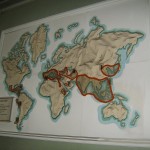

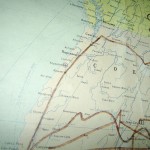
Left: Centers of Plant Origin. Center: His trip through North America. Right: He went through Oregon!
The Vavilov Institute is known to most of the world as a gene bank. Sergey informed us on the very first day that “Center for Plant Genetic Resources” would be a much more descriptive and accurate title, because the Institute carries out more research than many of its “Gene Bank” colleagues. VIR takes an herbarium sample of every variety it collects, does grow-outs to verify the variety (cultivation in storage), does “deep evaluation” as to the physiology, biochemistry, and immunities of the varieties, and at times carries out breeding work.
In addition to this research work, the VIR operates one of the largest and most well-established gene banks in the world, with somewhere around 320,000 accessions, and now operates 12 research stations around Russia. Additionally, they still work closely with the research stations in the now independent states of the former Soviet Union.
So not only does the VIR have the seeds, they have lots of data about the seeds. This makes the VIR a valuable source for breeding materials for seed companies, because the information that VIR can offer about its varieties is far greater than what can be offered by other gene banks in the world. Sergey told us that only 5% of accessions are used for breeding, and so the government must pay to support the preservation of the remaining 95%. But this is very costly and as a consequence, the Institute is struggling in many ways. The lack of funding makes the evaluation impossible — plant breeding is increasingly in private hands, so the preservation of plant genetics and support of institutes such as the VIR are no longer seen as being the responsibility of the government. The implications of this rationale are quite chilling.
The lack of funding is not exclusive to the Vavilov institute — many other gene banks in the world are suffering from a lack of funds, and reportedly the situation in the European gene banks is most troubling. While there are more than 1,300 gene banks of various sizes throughout the world (most of which consist of a room of freezers, see photo of the Lithuanian gene bank for an example), very few of them carry out the research that the Vavilov Institute is known for. With the financial situation becoming more complex each year, the question is becoming more and more urgent: who will carry on the work?

Some interesting Graffiti. Not as artsy as Banksy, but great nonetheless.
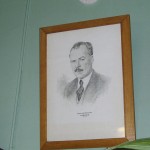
Leave a Reply